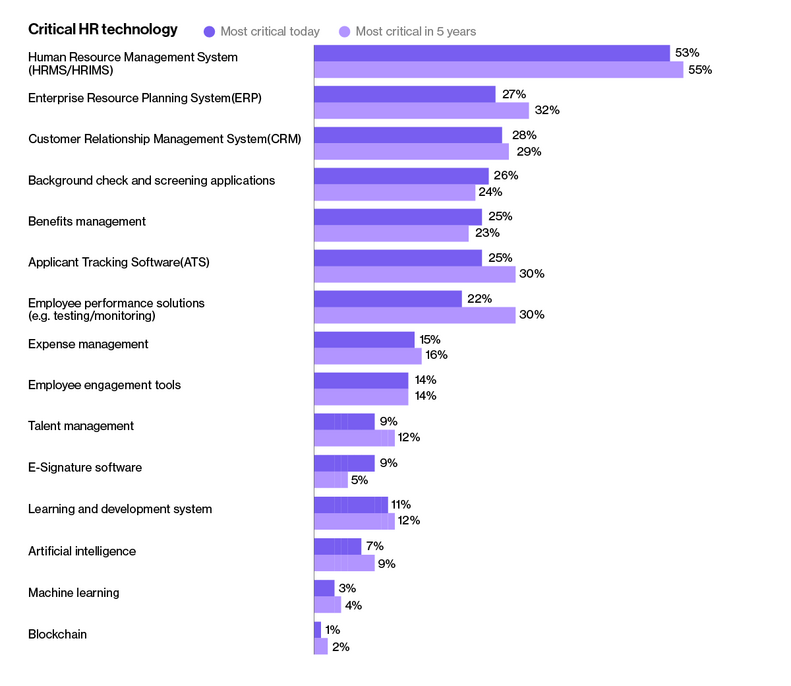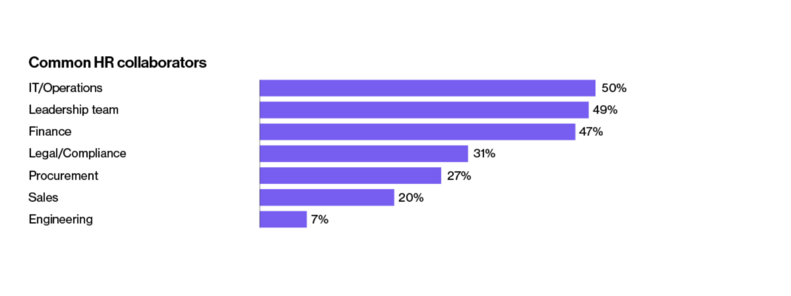HR Technology Trends: Embracing Digital Transformation
Today’s human resources teams face a stark dilemma—they spend too many of their working hours on tasks that they don’t deem important. This misallocation of time and energy resources is one that teams have attempted to solve with technology investments, but those efforts have fallen short.
These technology efforts and their results are one of the primary areas of focus in DocuSign’s HR Trends report. At the heart of this research is a survey of more than 800 key decision makers and influencers in HR functions across the world. The survey asked questions about the technology the respondents use today and the benefits they predict getting from new tools in the future.
In this post, we’ll pull out the parts of that survey that deal with HR initiatives to modernize their workflows with technology. Our respondents reported ambitious expectations, but dropoff of serious benefits after initial stages of their digital transformation. Let’s dive into the results.
HR teams aren’t getting maximum value from tech investments
The respondents in our survey are seeing the potential of new software in their workflow and making investments in new tools. They just aren’t figuring out the right way to make the most of those solutions yet. Less than 1 in 10 HR teams are utilizing 75% or more of their software’s total capabilities and a huge majority are stuck in the middle quartiles of capitalizing on technology investments.
da9b.png)
With 84% of respondents benefitting from a moderate amount of their complex software’s total potential, there has to be an explanation about what’s standing in the way of HR’s success with technology. Our research showed two clear areas for improvement—additional time for technology training (44%) and more intuitive software (44%)—and one main obstacle: integration with other systems (36%).
The future of HR responsibilities and technology
Several questions in our survey asked respondents to compare the HR industry today to a point five years in the future. In that timeframe, HR professionals universally indicate that they don’t expect a lot of change for either their specific team or the field in general. They also expect to be utilizing their technology to receive more of the same benefits they’re receiving today.
Since today’s technology is only partially optimized, it’s logical that HR professionals, who envision themselves having the same job priorities and the same tools five years down the road, would make investments to get more out of their technology.
One way today’s teams are trying to address that technology gap is by investing in a human resources management system (HRMS) and integrating it with other software. More than half of respondents identified the HRMS solution as the most important part of their technology toolkit both today and five years into the future. That number is almost twice as high as any other technology in both timeframes.

Production through automation
Another easy way to incorporate technology into any workflow is with the use of automations. This will make processes move faster while eliminating room for manual error or rework. Today’s HR teams have started to incorporate automations into their processes, but there’s still work to be done.
When it comes to hiring and onboarding new employees, around half of the respondents in our survey are using automations to streamline HR activities. However, the use of automation drops off as the employee journey matures from hiring to career success and retention activities. Fewer than one-fifth of respondents have automations in place to manage important life events that occur during emplyees’ tenure and fewer than one-third automate employee exits.
Despite the efforts made to increase automations at the beginning of an employee’s tenure at an organization, today’s HR teams are still being measured primarily by the productivity and satisfaction of employees further into their career. Of the six most common metrics used to determine HR success, only one (quality of hire) measures the initial hiring phase.
HR can lead the technology revolution
By a 4:1 ratio, respondents in our survey view themselves as strategic internal leaders, developing programs, policies and processes that blaze the trail for broader organizational success. Furthermore, nearly 7 in 10 responders identify the HR team as a frequent adopter of new technology. These teams are always on a search for new technology that will enable organization-wide success through innovation.
The final piece in the HR team’s toolkit is internal relationships with leaders who will support their initiatives. These are crucial to help the team achieve their goals. Our HR professionals report the closest internal ties to IT/Operations, leadership and finance. With the need for new technology, an appetite for better utilizing existing tools and access to those teams, HR teams should be on the doorstep of broad digital advances.

An easy way for any HR team to take the lead on technology is to build a modern system of agreement. The DocuSign Agreement Cloud for human resources offers the ability to start with simple eSignature technology and add tools to generate agreements, execute post-signature activities and manage the broader contract lifecycle. It’s the perfect way to guide an HR team through the digital transformation at exactly the right pace.
To see more about unblocking HR teams from outdated processes, download the entire HR Trends report.